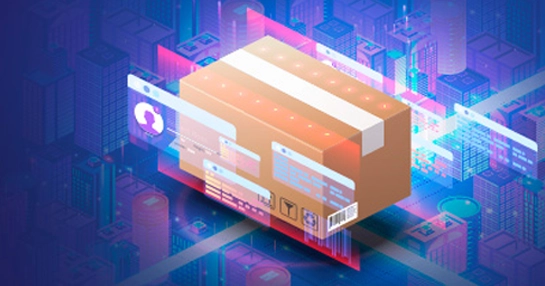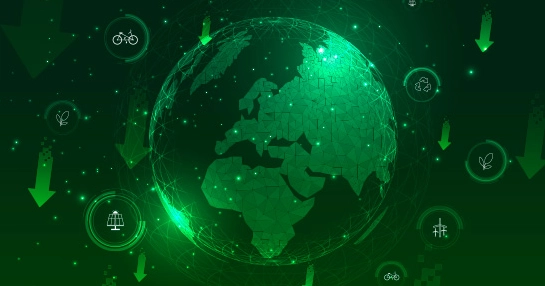-
GEP Software
-
- Procurement Software
- Direct Procurement Software
- Indirect Procurement Software
- Unified Source-to-Pay
- Source-To-Contract Software
- Procure-to-Pay
- Midsize & High Growth Enterprises
- Key Capabilities
- Spend Analysis
- Sourcing
- Contract Lifecycle Management
- Supplier Lifecycle Management
- Third-Party Risk Management
- Purchasing
- Payments
- Data Analytics and Reporting
- Do more with GEP SMART
- Intake Management & Orchestration
- Intelligent Category Management
- Tail Spend Management
- Cost Data & Analytics (GEP COSTDRIVERS)
- AI-First Supply Chain Management
- Supply Chain Visibility and Execution
- Logistics Visibility
- Inventory and Warehouse Management
- GEP Multienterprise Collaboration Network
- Supply Chain Control Tower
- Field Services
- Supply Chain Collaboration & Planning
- Supply Chain Planning
- Purchase Order Collaboration
- Forecast Collaboration
- Capacity Collaboration
- Quality Management Software
- Should-Cost Modeling
- Direct Material Sourcing
-
-
GEP Strategy
-
GEP Strategy
Unrivaled supply chain and procurement expertise + the transformative power of AI
Supply Chain Consulting
- Environmental, Social and Governance
- Sustainability Consulting Services
- Socially Responsible Sourcing
- Scope 3
- Demand and Supply Chain Planning
- Collaborative Planning
- Source To Contract
- Procure To Pay
- Inventory Strategy & Management
- Operations & Manufacturing Excellence
- GEP Total Inventory Management Solution
- Network Strategy & Optimization
- Warehousing & Transportation Management
-
-
GEP Managed Services
-
GEP Managed Services
World-class skills, experience and know-how — amplified by the power of AI
-


Procurement Professionals’ Roadmap for Reducing Scope 3 Emissions
Scope 3 emissions account for over 80% of a company’s carbon footprint and represent the most challenging aspect of sustainability efforts.
How can companies address Scope 3 emissions effectively? By mapping their emissions hotspots, collaborating with suppliers, and leveraging technology, businesses can take actionable steps toward sustainability.
This podcast, based on GEP’s extensive guide, unpacks the insights, offering practical tools and strategies to help procurement leaders make informed decisions and achieve tangible results.
What You'll Hear:
- Use spend-based and hybrid methods to identify your emissions hotspots
- Work with high-emission suppliers to develop impactful sustainability strategies
- Leverage dashboards and digital tools for real-time tracking and accountability
This is a audio recording of a recent podcast.
PODCAST SUMMARY
In this podcast, the hosts unpack the complexities of Scope 3 emissions—those indirect emissions generated throughout a company’s supply chain—and explore how procurement professionals can address them effectively. Using insights from GEP’s guide, Mapping and Reducing Scope 3 Emissions: A Quickstart Guide for Procurement Pros, the discussion emphasizes why Scope 3 emissions are a business-critical issue and offers actionable strategies for tackling them.
Understanding Scope 3 Emissions
Scope 3 emissions are often the largest component of a company’s carbon footprint, accounting for 80% or more of total emissions. These emissions come from upstream and downstream activities such as manufacturing, transportation, and product use. For businesses striving to achieve net-zero goals, ignoring Scope 3 emissions is no longer an option—it’s essential for competitiveness, investor trust, and customer satisfaction.
Mapping Scope 3 Emissions
The guide outlines practical steps for identifying emissions hotspots within a supply chain, starting with spending data. Spending data acts as a foundation, revealing which suppliers and categories contribute most to emissions. Companies can use four mapping methods:
1. Spend-Based: Uses financial data to estimate emissions by linking supplier spending to average emissions factors.
2. Environmentally Extended Input-Output (EEIO): Maps emissions by tying spending to a supplier's overall carbon footprint.
3. Category-Specific: Focuses on the average emissions associated with specific goods or services.
4. Supplier-Specific or Hybrid: Combines general data with detailed, supplier-provided insights to refine emissions estimates.
Starting with simpler methods like spend-based calculations provides an accessible entry point, while layering in supplier-specific data enables more granular insights for targeted action.
Reducing Scope 3 Emissions
Once emissions hotspots are identified, companies must move from analysis to action. The guide highlights supplier segmentation as a critical step: prioritizing collaboration with high-emission suppliers who have the greatest potential for improvement. By working closely with these suppliers, businesses can explore opportunities such as adopting alternative materials, enhancing energy efficiency, and reducing waste.
The conversation also emphasizes the importance of finding mutually beneficial solutions. For example, reducing waste in company operations can simultaneously lower the demand on suppliers, creating a win-win scenario for sustainability and cost savings.
The Role of Technology
Technology plays a pivotal role in managing Scope 3 emissions. Tools for supplier segmentation, data visualization, and real-time tracking help businesses stay informed and accountable. Dashboards are particularly valuable, providing actionable insights and making data accessible for decision-making. GEP’s platform, which integrates these functionalities, is highlighted as an example of how technology can streamline the process and enhance collaboration.
Why Scope 3 Emissions Matter
Beyond environmental benefits, tackling Scope 3 emissions offers strong business incentives. Investors increasingly evaluate companies based on ESG performance, while consumers gravitate toward brands aligned with their values. Proactively addressing Scope 3 emissions also reduces regulatory and financial risks, such as carbon taxes or supply chain disruptions.
Conclusion
Addressing Scope 3 emissions requires collaboration across the supply chain, robust technology, and a clear action plan. It’s not a one-time effort but an ongoing process of refinement and improvement. As businesses embrace this challenge, they build resilience, reduce risks, and contribute to a sustainable future.
TO LISTEN, Please Enter your EMAIL
JUST A FEW MORE THINGS ABOUT YOU









